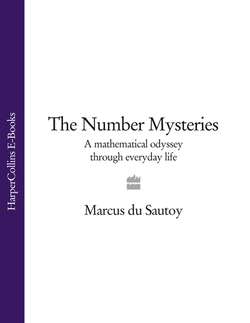Читать книгу The Number Mysteries: A Mathematical Odyssey through Everyday Life - Marcus Sautoy du - Страница 32
What shape do you like your tea?
ОглавлениеShapes have become a hot issue not just for football manufacturers but also for the tea drinkers of England. For generations we were content with the simple square, but now teacups are swimming with circles, spheres and even pyramid-shaped tea bags in the nation’s drive to brew the ultimate cuppa.
The tea bag was invented by mistake at the beginning of the twentieth century by a New York tea merchant, Thomas Sullivan. He’d sent customers samples of tea in small silken bags, but rather than removing the tea from the bags, customers assumed they were meant to put the whole bag in the water. It took until the 1950s for the British to be convinced by such a radical change to their tea-drinking habits, but today it is estimated that over 100 million tea bags are dunked each day in the UK.
For years, the trusty square had allowed tea drinkers to make a cuppa without the hassle of having to wash out used tea leaves from teapots. The square is a very efficient shape—it was easy to make square tea bags, and there was no wastage of unused bits of bag material. For fifty years PG Tips, the leading manufacturer of tea bags, stamped out billions of tea bags a year in their factories up and down the country.
But in 1989, their main rival, Tetley, made a bold move to capture the market by changing the shape of the tea bag: they introduced circular bags. Although the change was little more than an aesthetic gimmick, it worked. Sales of the new shape soared. PG Tips realized that they had to go one better if they were to retain their customers. The circle might have excited punters, but it was still a flat, two-dimensional figure. So the team at PG decided to take a leap into the third dimension.
The PG Tips team knew that we are an impatient lot when it comes to our tea. On average, the bag stays in the cup for just 20 seconds before being hoisted out. If you cut open the average two-dimensional bag after it has been dunked for just 20 seconds you’ll find that the tea in the middle is completely dry, not having had time to get into contact with the water. The researchers at PG believed that a three-dimensional bag would behave like a mini teapot, giving all the leaves the chance to make contact with the water. They even enlisted a thermo-fluids expert from London University’s Imperial College to run computer models to confirm their belief in the power of the third dimension to improve the flavour of tea.
